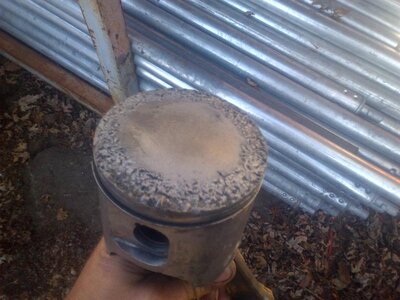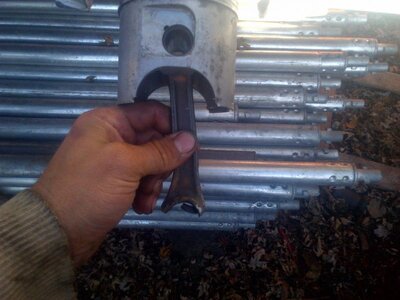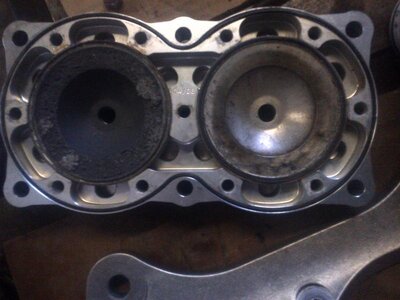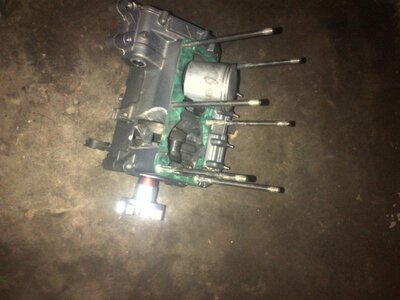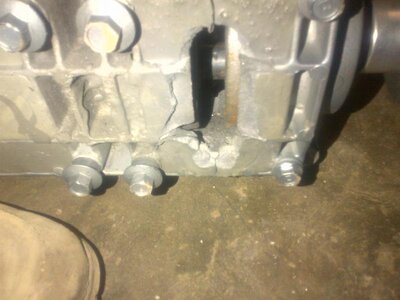Just as waterfreak said. That is not detonation. That is parts of the lower rod bearing being compressed between piston and head. Sequence like this: rod bearing begins to fail (could be pitting of rollers or retainer failure), as its kept running the bearing begins to liberate pieces of the rollers, retainer, and thrust washers. As those parts go up the transfer and boost port they are compressed between the piston and head. As the engine continues to run and shed parts from the bearing, the rod begins to move around on the crank pin (since not much of the bearing is left). Normally one of the rollers (but can be retainer) catch as its exiting the rod. Locking up the rod, crank continues to spin and break the rod. Rod flys through case thanks to centrifugal force. All this happens pretty fast once the liberated pieces start to get bigger. Long story short you got some good paper weights.

